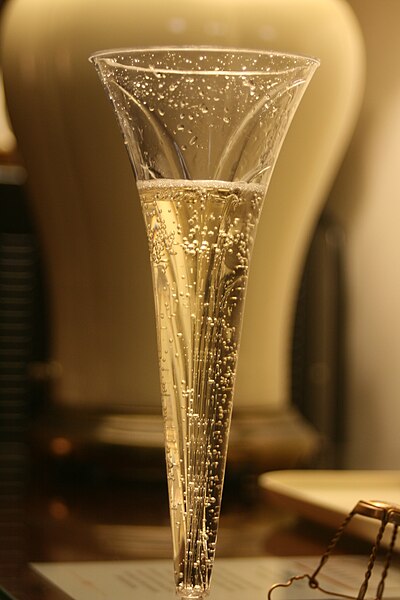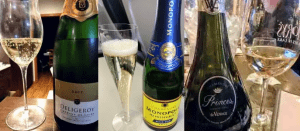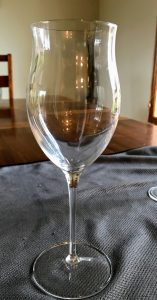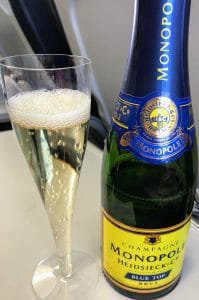 Did you ring in the New Years with a flute of bubbles?
Did you ring in the New Years with a flute of bubbles?
You uncouth swine!
Don’t you know that all the cool kids are ditching flutes in favor of regular wine glasses? As Margareth Henriquez, president of Champagne Krug, describes it, drinking your bubbly from flutes is like going to a concert with ear plugs and should only be used for “…bad Champagne, sorbet or gazpacho.”
Oh my!
A few folks had some dissenting opinions on this anti-flute craze, most notably Jameson Fink of Wine Enthusiast who wrote an impassioned defense of the unfashionable flute, bringing some scientific expertise for back-up.
It’s a good defense. The most persuasive argument comes from David Gire, assistant professor at the University of Washington’s psychology department. Gire notes how important visionary aesthetics are to our enjoyment. He also describes how these aesthetics can psychologically impact our perception of flavor.
As Fink points out, even the most ardent anti-flutists can’t discount the visual appeal that flutes have with their cascading beads of bubbles.
Now for me, I take a pragmatic approach. I’ll drink my bubbles from a variety of vessels and see what I like. So far, my runaway favorite has been the Luigi Bormioli Wine Styles Pink Wine Glass. You can see it in use for many of my sparkling wine reviews such as for the Paringa Sparkling Shiraz and Deligeroy Cremant de Loire.
I’ll also use a traditional flute as I did in my reviews of the Levert Freres Cremant de Bourgogne, Heidsieck Monopole Blue Top and Segura Viudas Cava. And I will do like the cool kids sometimes in using a regular ole wine glass such as with the De Venoge Princes Blanc de Noirs.
The Bormioli pink wine glass has become my go-to because it combines the best of both worlds. I get a wider opening that allows the aromatics to come out, but it is sufficiently narrow to showcase the bubbles.

You can see the difference in bubbles between the three types of glasses – the Bormioli pink wine glass, a flute and a regular wine glass.
For the most part, I agree with Fink that the visual spectacle of the bubbles is key to enjoyment.
There are advocates in the wine industry (such as Robert Walters in his book Bursting Bubbles) that argue that focusing on the “bubbles” in Champagne takes away from appreciation and evaluation of it as a “real wine.” In their opinion, a great Champagne is one that you could completely degas and it would stand on its own. The trend away from flutes (so they say) helps highlight the “realness” of great Champagne.
There may be truth to that but, dammit, I like my bubbles!

My go-to bubbles glass, the Luigi Bormioli pink wine glass
However, I can’t wholly join Fink on the dark side of Flute Apologetics. In my own anecdotal experience, I don’t get as much life and depth from my bubbles when I’m nosing them through the narrow opening of a flute.
In fact, a friend of mine of who read my lackluster reviews for the 2004 and 2006 vintages of Dom Perignon at Daniel’s Champagne Gala, urged me to try them again in a regular wine glass because, in his view, the “yeasty depth of Dom never shows well in a flute.” He probably has a point.
So I like my compromise Bormioli glasses but I’ll certainly keep on experimenting.


